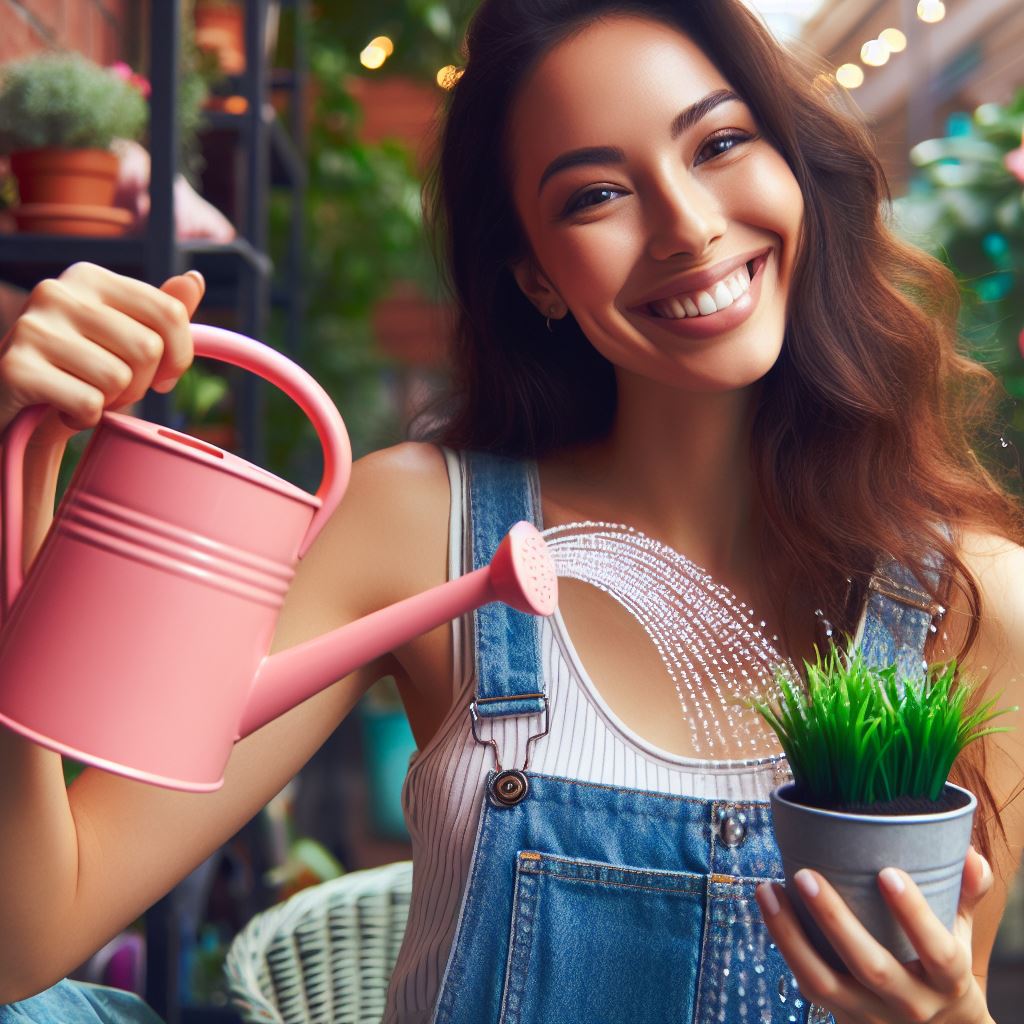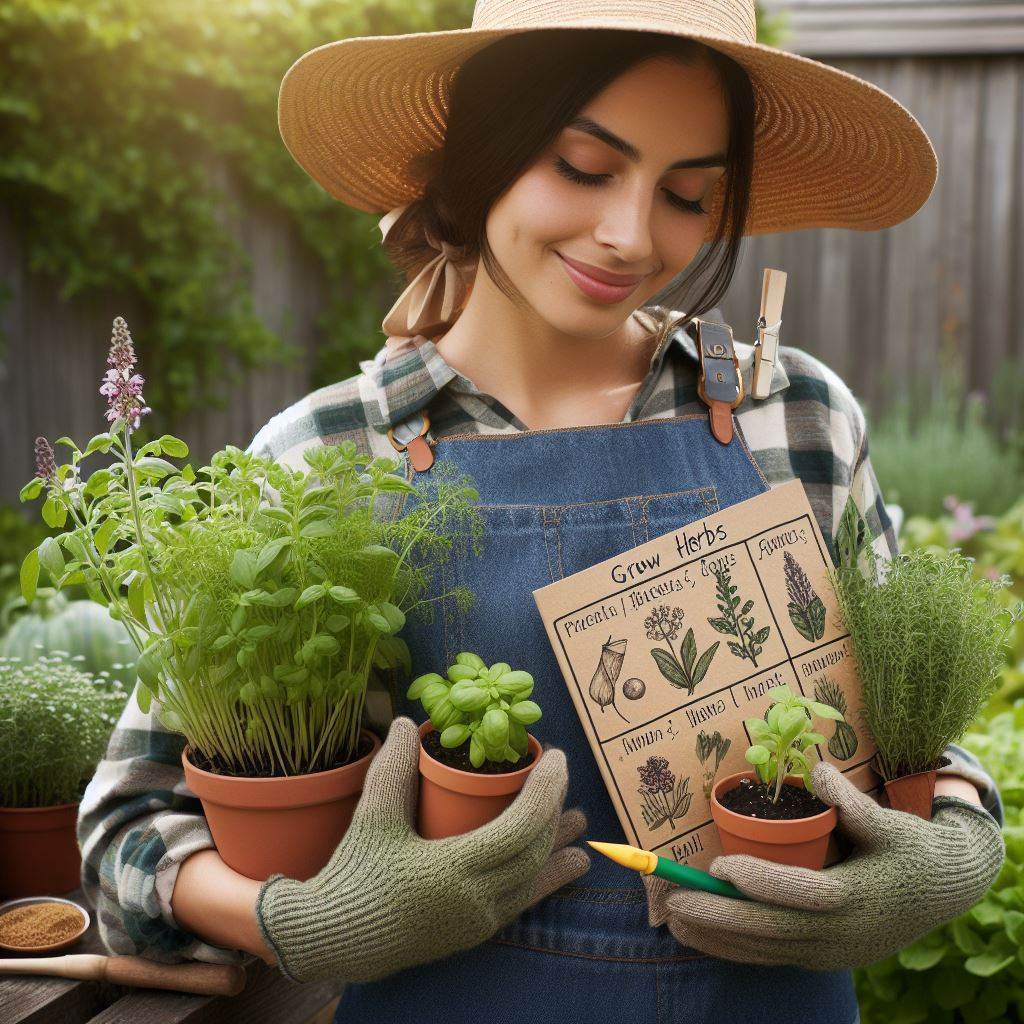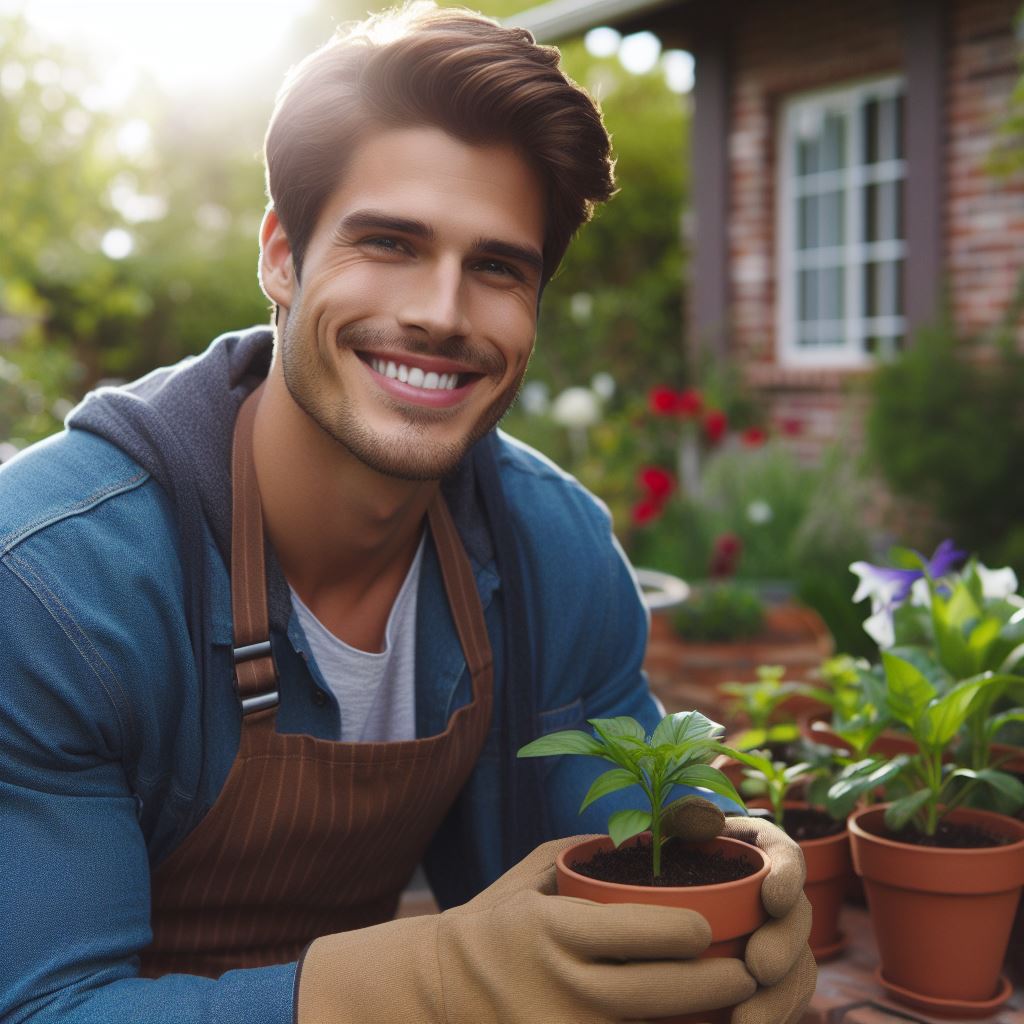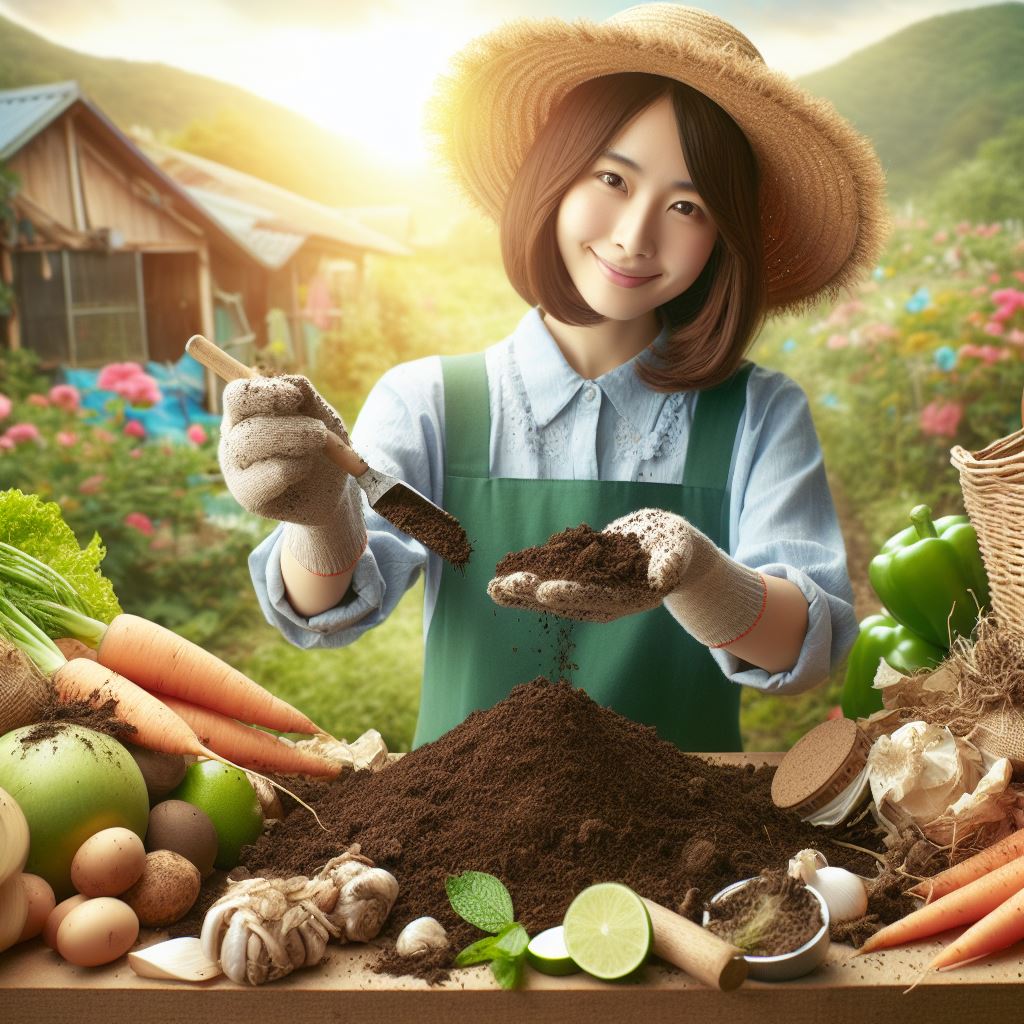Introduction
Container gardens are a popular gardening method that involves growing plants in pots or other containers.
This allows individuals with limited space or no access to a traditional garden to still enjoy gardening.
The importance of container gardens cannot be overstated for those who lack the space or resources for a traditional garden setup.
In urban areas or small living spaces, container gardens provide a solution to grow plants and flowers.
Throughout the year, container gardens offer numerous benefits.
In spring and summer, they bring vibrant colors and fragrances, enhancing the aesthetics of any space.
They also allow individuals to grow their own fresh produce, promoting a healthy lifestyle.
During autumn, container gardens can be transformed to display beautiful fall foliage, adding warmth and coziness to the environment.
Moreover, these gardens provide an opportunity for creativity by experimenting with different plant combinations and decorative elements.
Winter does not hinder the enjoyment of container gardens either.
By choosing cold-hardy plants, containers can continue to hold greenery even in the chilly months.
This brings life to otherwise empty spaces and keeps the gardening passion alive year-round.
Container gardens offer more than just gardening activities; they create a sense of tranquility, reduce stress, and improve mental well-being.
Additionally, they provide a hands-on learning experience for children, teaching them about the natural world and nurturing their sense of responsibility.
In general, container gardens offer a versatile and rewarding gardening experience without the limitations of space or access to traditional gardens.
With benefits experienced throughout the year, they are an ideal solution for those seeking the joys of gardening in any environment.
Choosing the Right Containers
Choosing the right containers for your plants is crucial for their overall health and growth.
The container you choose should be suitable for the specific type of plant you are growing.
Importance of Selecting Suitable Containers
- Proper drainage: Different plants have different drainage requirements. Selecting containers with adequate drainage holes allows excess water to escape and prevents root rot.
- Size and space requirements: The right container size ensures that plants have enough space for their roots to grow and spread. Oversized containers may lead to overwatering, while undersized ones can stunt growth.
- Mobility and flexibility: Choosing containers that are easy to move or rearrange is particularly useful if you have limited sunlight or need to protect plants from extreme weather conditions.
- Decorative purposes: Containers come in various shapes, sizes, and materials, allowing you to create visually appealing garden displays.
Different Container Materials and their Pros and Cons
- Terracotta: These clay pots are popular for their natural aesthetics and breathability. However, they can dry out quickly and can be fragile.
- Plastic: Lightweight and durable, plastic pots retain moisture better. However, they don’t offer breathability and may overheat in direct sunlight.
- Ceramic: These pots come in a variety of colors and styles, perfect for ornamental plants. They retain moisture well but can be heavier and more fragile.
- Wood: Wooden containers offer excellent insulation and a natural look. However, they may rot over time and require regular treatment with preservatives.
Tips on Selecting the Right Size and Depth for Containers
- Consider mature plant size: Research the anticipated size of the mature plant and choose a container that can comfortably accommodate the roots.
- Room for growth: Select containers that allow plants to grow and expand. Ensure there’s ample space for both roots and foliage.
- Deep containers for root vegetables: Vegetables like carrots and potatoes require deeper containers to develop properly.
- Shallow containers for herbs: Herbs have smaller root systems and thrive in shallower containers.
- Consider water retention: Smaller containers tend to dry out quickly, while larger ones may retain too much water. Strike a balance based on plant needs.
- Vertical gardening: If space is limited, consider vertical gardening options like hanging baskets or trellises to maximize the use of available space.
Remember, the containers you choose play a vital role in the overall success of your container garden.
Taking into account the specific needs of your plants and the pros and cons of different materials will ensure healthy and thriving plants all year round!
Read: Attracting Beneficial Insects to Gardens
Selecting the Right Plants
Considering Climate and Location
- Choose plants that are suitable for the specific climate and location of your container garden.
- Take into account the amount of sunlight, temperature fluctuations, and rainfall patterns in your area.
- Research the USDA hardiness zone of your region to determine which plants are most likely to thrive.
- Consider the microclimate of your garden, such as the presence of a nearby wall or large tree that may provide shade or wind protection.
- Understanding your local climate will help you select plants that can withstand the challenges they may face.
Appropriate Plants for Year-Round Gardening
- Look for plants that have a long growing season and can tolerate temperature variations.
- Choose evergreen plants that retain their foliage all year and provide structure and interest even during winter.
- Opt for perennial plants that come back year after year, reducing the need for replanting.
- Select plants with varying bloom times to ensure continuous color throughout the seasons.
- Use a mix of annuals, biennials, and perennials to create a dynamic and evolving container garden.
Creating a Visually Appealing Container Garden
- Combine plants with contrasting colors, textures, and heights to create visual interest.
- Choose a focal plant or centerpiece that will anchor the container garden and attract attention.
- Consider the mature size of the plants and ensure they are proportional to the size of the container.
- Use a combination of trailing, upright, and filler plants to achieve a balanced and full look.
- Experiment with different plant combinations to find what works best for your personal aesthetic.
Tips for Mixing and Matching Plants
- Choose plants that have similar sunlight and water requirements to ensure they thrive together.
- Consider the growth habits of the plants and select ones that won’t overpower or overshadow each other.
- Combine plants with different leaf shapes and sizes to add texture and create an interesting visual display.
- Don’t be afraid to mix different flower colors and bloom times for a vibrant and continuously blooming garden.
- Experiment with asymmetrical arrangements by placing taller plants towards the back and cascading plants towards the front.
- Consider using a color scheme to create a cohesive and harmonious container garden.
- Include herbs or edible plants for a container garden that is not only visually appealing but also functional.
- Regularly assess the growth of your container garden and make adjustments as necessary, such as pruning or removing plants that are not thriving.
- Don’t be afraid to be creative and think outside the box when mixing and matching plants in your container garden.
By considering climate and location, selecting appropriate plants, and using creative combinations, you can create a stunning year-round container garden that brings beauty and joy to your outdoor space.
Read: Using Essential Oils Against Pests
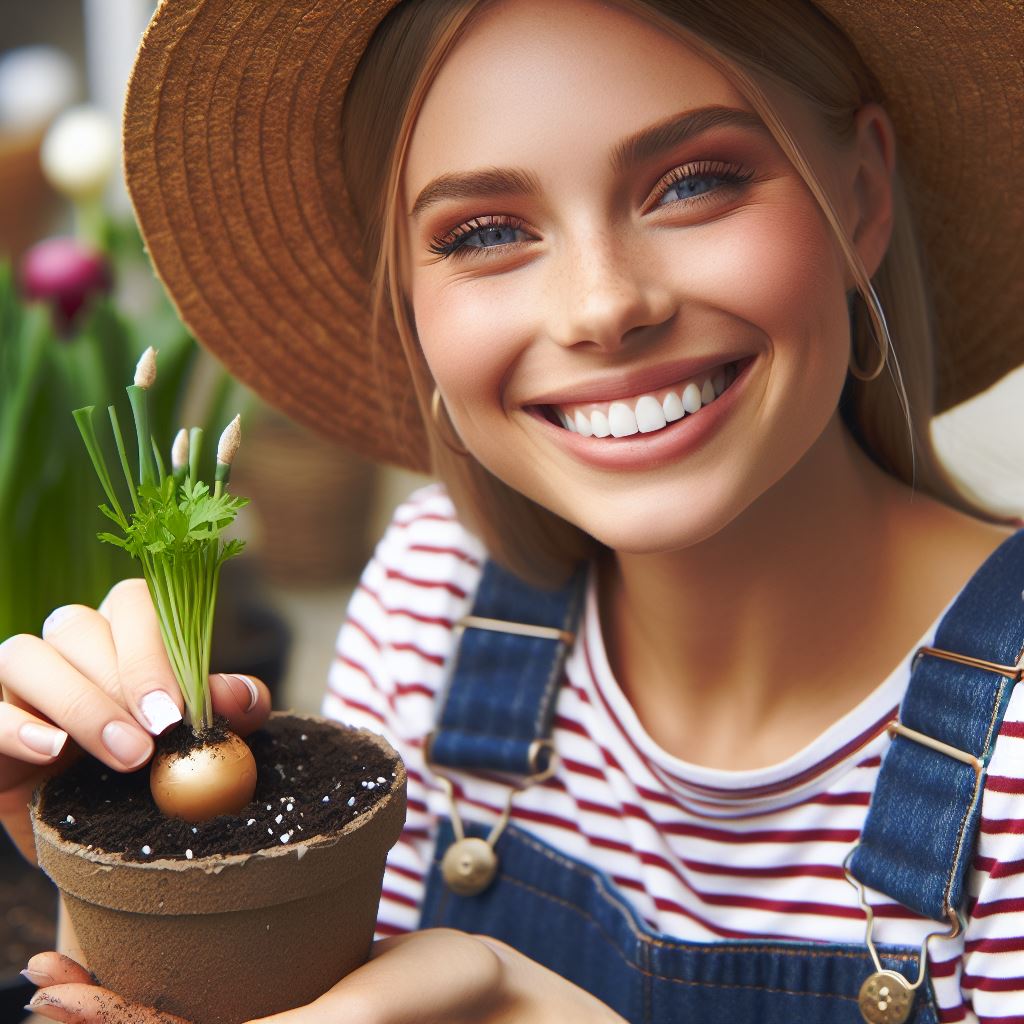
Soil and Fertilizer Tips
Importance of using high-quality soil in containers
When it comes to container gardens, the quality of the soil you use is crucial.
Using high-quality soil ensures the success of your plants.
Here are some reasons why using top-notch soil is important:
- Adequate Drainage: High-quality soil allows for good drainage, preventing waterlogged roots and ultimately plant death.
- Nutrient Availability: Good soil contains essential nutrients that your plants need to thrive. It provides a fertile environment for healthy plant growth.
- Root Development: Quality soil supports proper root development which promotes strong and vigorous plants.
Different types of soil suitable for container gardens
Now that you understand why high-quality soil is essential, let’s talk about different types of soil suitable for container gardens.
- Potting Soil: This is the most common choice for container gardening. It is specifically formulated to provide adequate drainage and nutrient availability.
- Garden Soil: If you have access to well-draining garden soil, you can use it for container gardens. However, make sure to mix it with equal parts of compost for better results.
- Coconut Coir: This is an organic alternative to peat moss. It retains moisture well and has excellent drainage properties.
- Vermiculite: Vermiculite improves water retention and aeration in the soil. It is often used as a soil additive to enhance the overall quality of container garden soil.
- Perlite: Perlite is a lightweight volcanic rock that improves drainage and aeration in the soil. It prevents soil compaction and enhances root development.
Tips for fertilizing container gardens throughout the year
Now that you have chosen the right soil for your container garden, let’s discuss fertilization tips to ensure healthy plant growth throughout the year.
Transform Your Agribusiness
Unlock your farm's potential with expert advice tailored to your needs. Get actionable steps that drive real results.
Get Started- Slow-Release Fertilizer: Use slow-release fertilizers that provide a steady supply of nutrients over an extended period. This minimizes the risk of fertilizer burn and ensures continuous feeding.
- Organic Fertilizers: Consider using organic fertilizers as they improve soil structure over time and contribute to long-term soil fertility.
- Nutrient Deficiency Detection: Regularly inspect your plants for signs of nutrient deficiency. Adjust your fertilization schedule accordingly to meet their needs.
- Seasonal Fertilization: Different plants have different nutrient requirements throughout the year. Adjust your fertilization schedule based on the specific needs of your plants during each season.
- Liquid Fertilizers: Supplement your slow-release fertilizers with liquid fertilizers for an immediate nutrient boost. These are especially beneficial during periods of rapid plant growth or flowering.
- Compost: Incorporate compost into your container garden soil. It adds organic matter, improves overall soil quality, and slowly releases nutrients.
Remember, regular fertilization is essential for container gardens as plants cannot access nutrients from the ground like in traditional gardens.
By choosing the right soil and fertilizing correctly, you will ensure the success of your container garden throughout the year.
In fact, using high-quality soil in container gardens is crucial for proper drainage, nutrient availability, and root development.
There are various types of soil suitable for container gardens, including potting soil, garden soil, coconut coir, vermiculite, and perlite.
Fertilizing your container garden throughout the year is equally important.
Consider slow-release fertilizers, organic options, nutrient deficiency detection, seasonal fertilization, liquid fertilizers, and compost incorporation for optimal plant growth.
With these soil and fertilizer tips, you’ll be on your way to a thriving container garden all year round.
Read: Pest Control: Organic Solutions for Gardens
Watering and Drainage
Importance of Proper Watering Techniques for Container Gardens
- Watering is crucial for container gardens as plants can’t access water from the ground.
- Improper watering can lead to overwatering or underwatering, causing plant stress and even death.
- Proper watering ensures plants receive enough moisture for healthy growth and prevents root rot.
- It helps maintain nutrient balance, prevents wilting, and allows efficient uptake of nutrients.
Tips on Watering Frequency and Techniques for Different Seasons
- For spring and fall, water container gardens when the top inch of soil feels dry.
- In hot summers, increase watering frequency to twice a day, early morning and late afternoon.
- In winter, water less frequently but thoroughly, ensuring the soil doesn’t dry out completely.
- Consider using a drip irrigation system or self-watering containers for automated and efficient watering.
- Monitor moisture levels by inserting your finger into the soil to know when to water.
- Avoid overwatering by ensuring proper drainage and using a well-draining potting mix.
Importance of Good Drainage in Containers and How to Ensure It
- Proper drainage prevents waterlogged soil and ensures oxygen reaches the plant’s roots.
- Inadequate drainage can lead to root rot, fungal diseases, and stunted plant growth.
- Choose containers with drainage holes and use saucers or trays to collect excess water.
- Place a layer of small rocks or broken pottery at the bottom of the container for better drainage.
- Use a well-draining potting mix that is specifically formulated for container gardening.
- Avoid compacting the soil and ensure it is loose to allow water to flow freely.
These tips will help you maintain the proper watering techniques and ensure good drainage in your container gardens throughout the year.
Remember, each plant may have specific watering needs, so it’s essential to research and understand the requirements of the plants you are growing.
With the right watering frequency, technique, and good drainage, your container gardens will thrive and bring you joy and beauty all year round.
Read: Maximize Small Spaces: Vertical Gardening
Container Garden Maintenance
Maintaining container gardens is essential for their long-term success.
Here are some common maintenance tasks and tips to keep your plants thriving:
- Ensure regular watering by checking soil moisture and watering when the top inch is dry.
- Feed container plants with balanced, slow-release or liquid fertilizer to replenish nutrients.
- Maintain container plant shape and size through regular pruning.
- Promote continuous blooming by deadheading faded flowers just above a bud or leaf.
- Repot every 1-2 years to prevent stunted growth and provide fresh soil and space for roots.
- Apply organic mulch like shredded bark to conserve moisture and regulate soil temperature.
- Clean containers regularly with water and mild soap to prevent mold and pathogen buildup.
- Monitor for pests such as aphids and use organic insecticides or homemade remedies like neem oil.
- Prevent disease spread by avoiding overhead watering and promptly removing infected plant material.
- Protect container plants from frost by moving indoors or insulating with bubble wrap in colder climates.
Remember, each plant has specific maintenance requirements, so it’s essential to research and understand the needs of your container garden’s individual species.
By following these maintenance tips, you can enjoy a flourishing and beautiful container garden year-round.
Winterizing Container Gardens
Winter can be a harsh season for container gardens, but with the right preparations, you can increase the chances of your plants surviving until spring.
Here are some tips on how to winterize your container gardens and protect your plants from the cold:
Moving Containers to Sheltered Areas
One of the first steps in winterizing your container gardens is relocating them to sheltered areas.
Find a spot that provides protection from strong winds, such as a covered porch, garage, or shed.
This will help reduce the exposure to cold temperatures.
Grouping Containers Together
If you have multiple containers, consider grouping them together during winter.
By clustering your containers, they can create a microclimate that provides additional insulation and protection from frost.
Insulating Containers
To further protect your plants, consider wrapping the containers with insulation materials such as burlap or bubble wrap.
This will help retain heat and prevent extreme temperature fluctuations that can damage the roots.
Mulching the Soil
Apply a layer of mulch on top of the soil in your containers.
This helps insulate the roots and prevents them from freezing.
Mulch also helps retain moisture, which is important during the winter months.
Watering Moderately
While it’s important to keep the soil moist, be mindful not to overwater your container gardens during winter.
Excess moisture can lead to root rot in cold temperatures. Water only when the top inch of soil feels dry.
Protecting Plants from Frost
When frost is in the forecast, cover your container gardens with frost blankets or old bedsheets to provide insulation.
Avoid using plastic as it can trap moisture and lead to fungal problems.
Considering Overwintering Techniques
Overwintering is the process of protecting plants through the winter season.
Different types of plants may require specific techniques.
Research the appropriate methods for each plant in your container gardens.
Perennials
Perennials can be left in containers, but they may require additional insulation.
Consider wrapping the containers with insulating materials as mentioned earlier.
Bulbs
If you have bulbs in your containers, they can be overwintered by moving them to a cool, dry place like a cellar or garage.
Ensure the temperature stays above freezing.
Tender Plants
Tender plants, such as tropicals or annuals, may need to be brought indoors during winter.
Place them near a window with sufficient sunlight or use grow lights.
By following these winterizing tips, you can give your container gardens the best chance of survival during the cold winter months.
Remember to monitor them regularly and make adjustments as necessary.
Prepare your containers in advance, and come springtime, your plants will thank you with beautiful blooms and vibrant foliage!
Conclusion
In this blog post, we explored various tips for maintaining container gardens year-round.
We discussed the importance of choosing the right containers and soil, providing adequate sunlight and water, and protecting plants during extreme weather conditions.
We also touched upon the benefits of container gardening, such as its versatility, convenience, and ability to add greenery to any space.
If you have been inspired by this post, I encourage you to start or continue your container garden journey.
Don’t be discouraged by any setbacks you may face – gardening is a learning process, and every mistake is an opportunity to grow.
Remember to stay patient, observe your plants closely, and make adjustments accordingly.
I hope that this post has provided you with valuable information and motivation to embark on your own container garden adventure.
Feel free to reach out and share your successes, stories, and even challenges you may have encountered along the way.
Your experiences can serve as inspiration to others who are just starting or looking to expand their container gardens.
So, let’s create a community of passionate container gardeners, filled with knowledge and enthusiasm.
Share your triumphs, seek advice, and together, let’s cultivate beautiful and thriving container gardens all year round.
Happy gardening!

